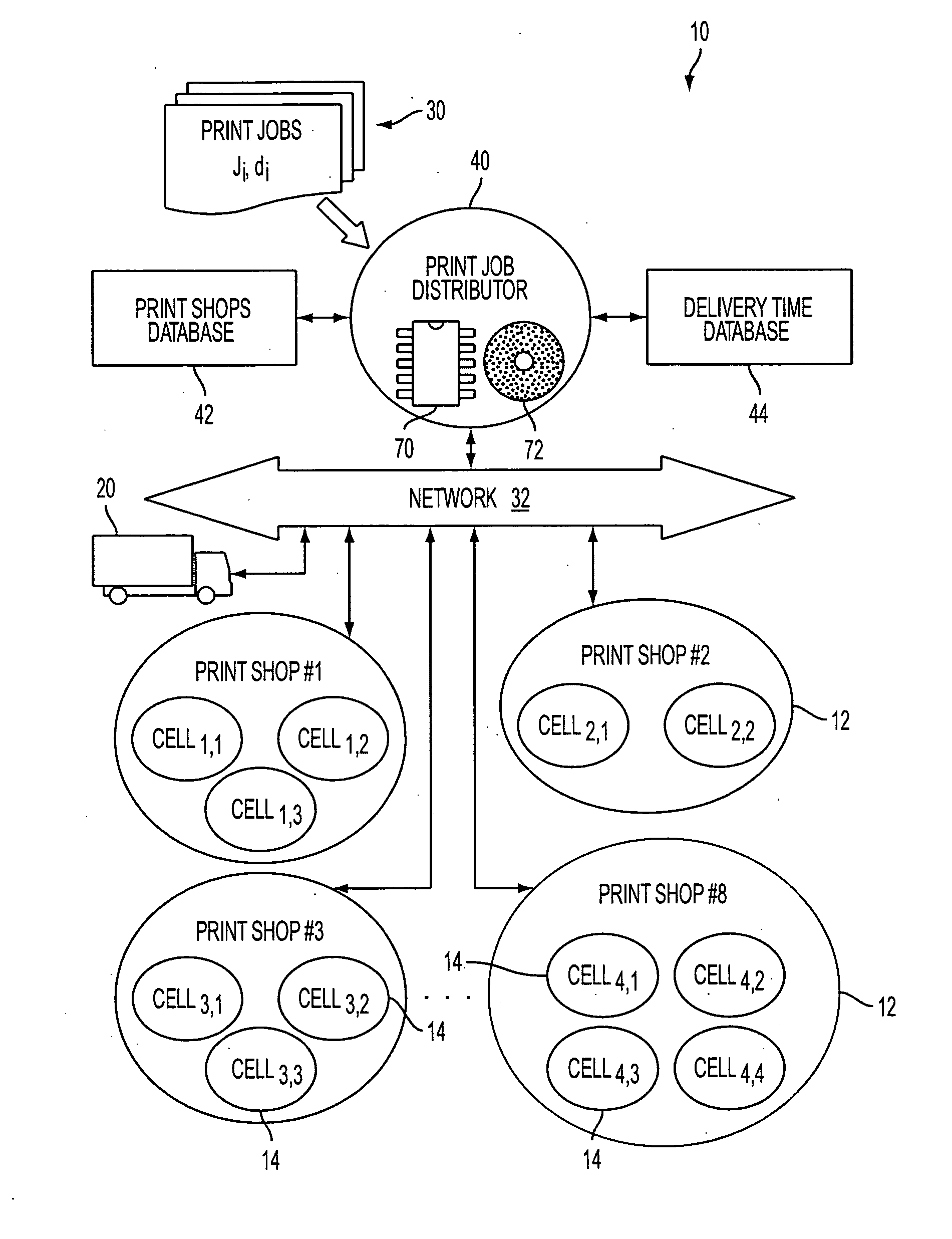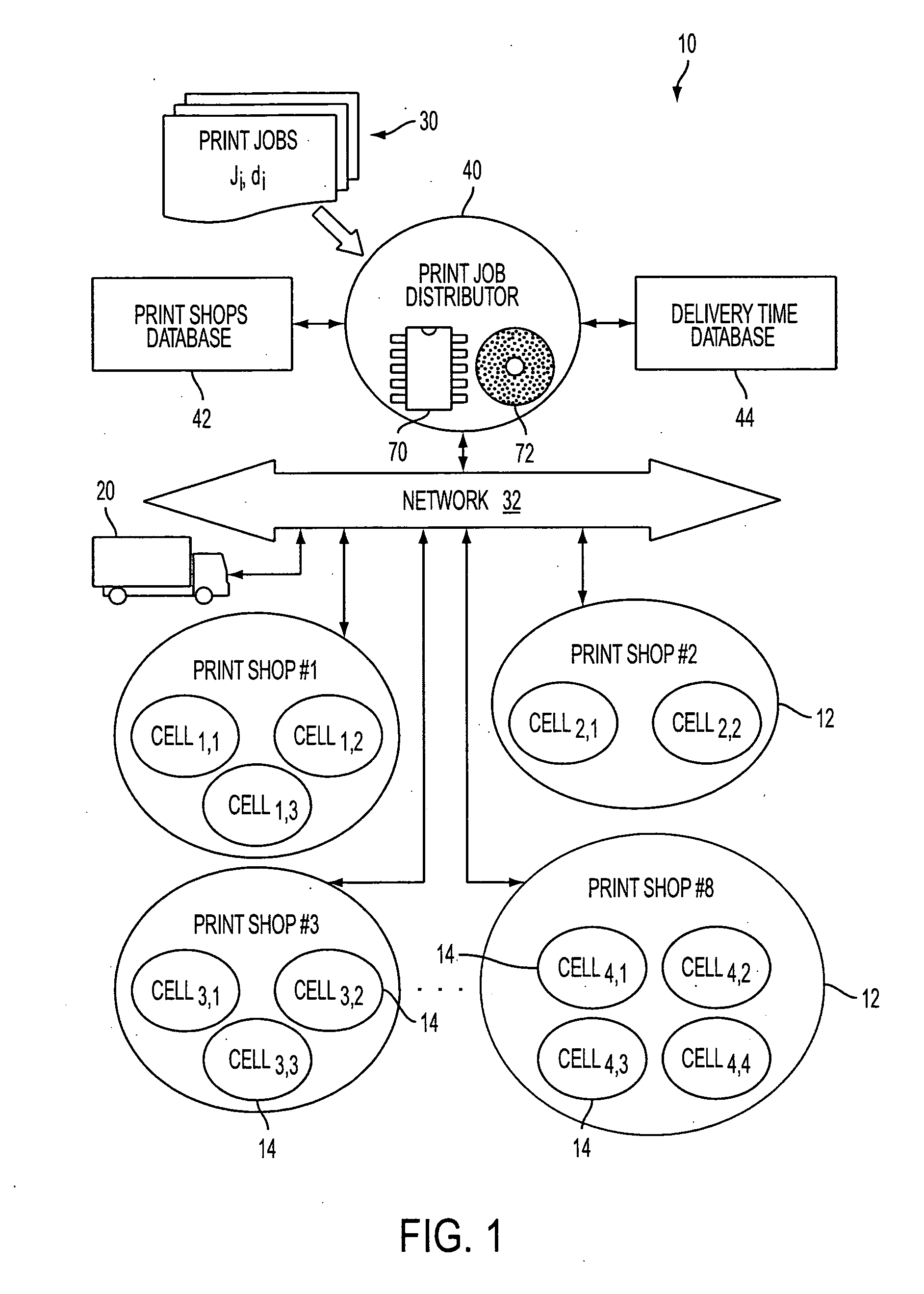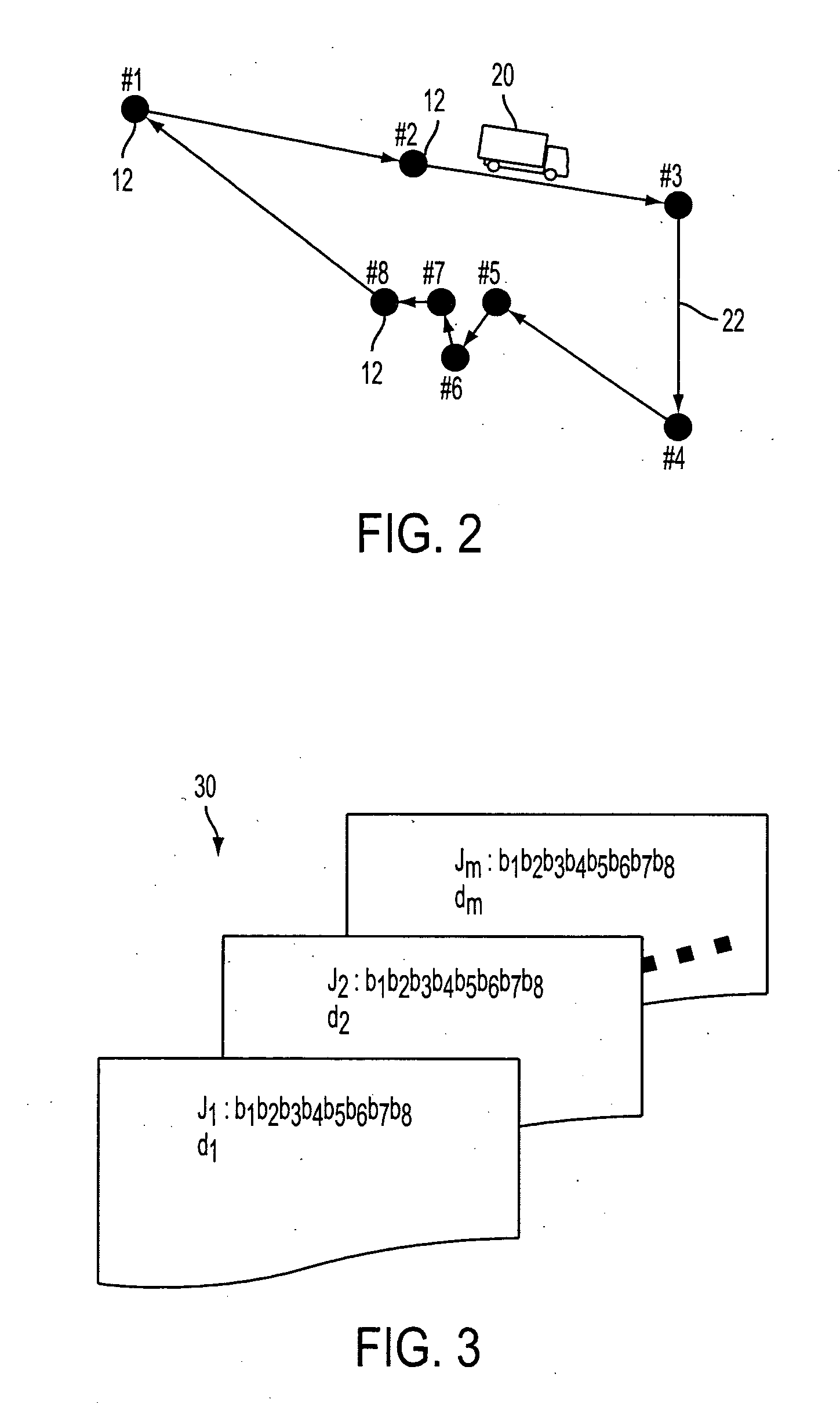Print job allocation system and method
a printing job and job allocation technology, applied in the field of printing job allocation system and method, can solve the problems of inefficiency of ad hoc transfer mechanism, long turnaround time for printing jobs, and inability to efficiently distribute the workload of multi-shop printing enterprises
- Summary
- Abstract
- Description
- Claims
- Application Information
AI Technical Summary
Benefits of technology
Problems solved by technology
Method used
Image
Examples
Embodiment Construction
[0021] With reference to FIG. 1, a printing enterprise 10 includes a plurality of print shops. In FIG. 1, eight print shops are included in the printing enterprise 10, with four print shops 12 illustrated. Each print shop includes certain printing equipment such as marking engines, paper handlers, finishing equipment, and so forth (not illustrated), and also has a certain number of employees working at any given time to operate such printing equipment.
[0022] In some embodiments, the equipment of each print shop 12 are organized into autonomous cells 14 each capable of receiving and processing one or more classes of print jobs. Each autonomous cell typically includes one or more marking engines, various finishing capabilities such as collating, stapling, hole-punching, binding, or so forth, and optional paper handling capabilities, sufficient to process print jobs of the designated class or classes. Print jobs received by one of the print shops 12 are divided amongst the cells 14 of...
PUM
 Login to View More
Login to View More Abstract
Description
Claims
Application Information
 Login to View More
Login to View More - R&D
- Intellectual Property
- Life Sciences
- Materials
- Tech Scout
- Unparalleled Data Quality
- Higher Quality Content
- 60% Fewer Hallucinations
Browse by: Latest US Patents, China's latest patents, Technical Efficacy Thesaurus, Application Domain, Technology Topic, Popular Technical Reports.
© 2025 PatSnap. All rights reserved.Legal|Privacy policy|Modern Slavery Act Transparency Statement|Sitemap|About US| Contact US: help@patsnap.com



